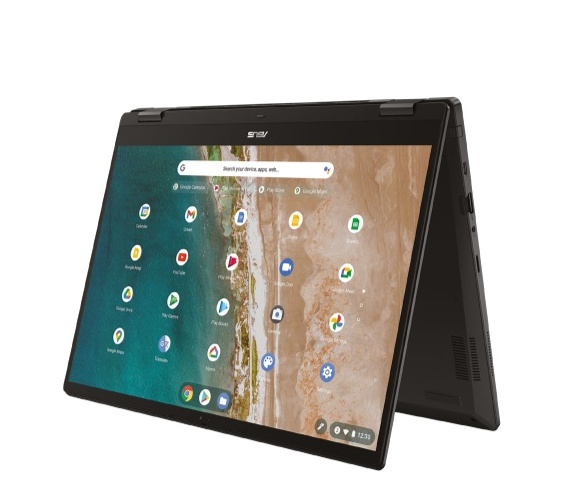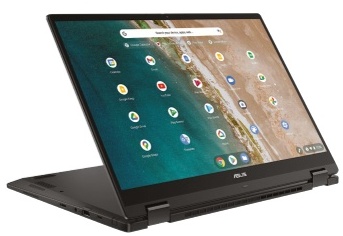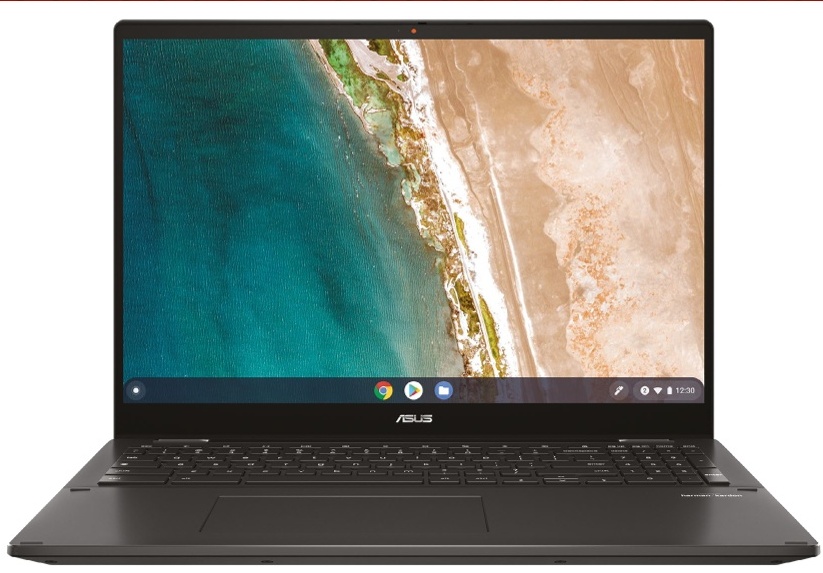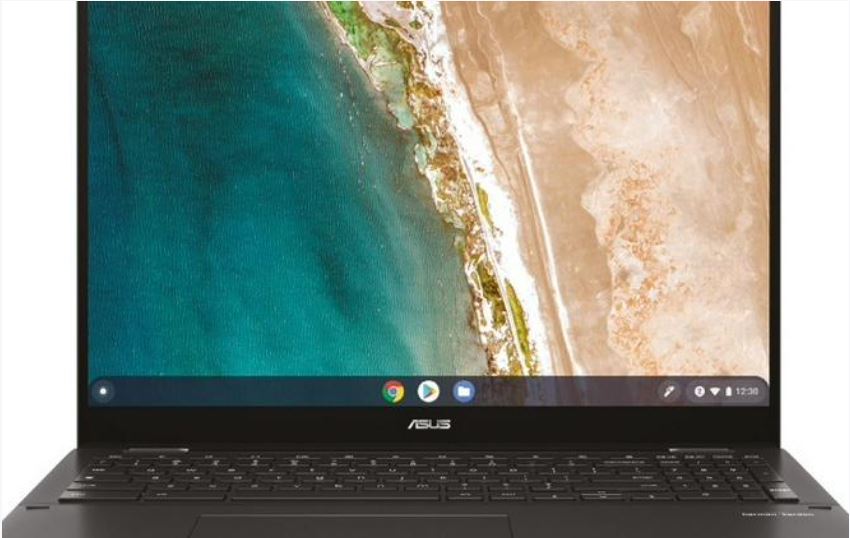Why you can trust TechRadar
This review first appeared in issue 356 of PC Pro.
The Chromebook Enterprise Flip CB5 comes across as both a reinvention of Asus’ excellent Chromebook Flip CX5 convertible, and as a premium, supersized version of its CM34 Flip. Like the former, it’s a big-screen, 2-in-1 convertible with a metallic shell and a fast Intel Core i5 spec. Like the latter, it’s switched to a squarer display with a 16:10 aspect ratio and 1,920 x 1,200 resolution, only here the screen is a massive 16 inches. Using it as a tablet is a slightly bizarre experience and there’s no USI stylus for notes and doodles. But it’s brilliant used in tent mode for ad hoc presentations or entertainment.

There’s a lot to like about this design, including the thin “nano-edge” frame around the display, and the way the hinge pitches the rear of the laptop upwards for a more comfortable working position. Compared to many of the plastic-heavy Chromebooks on test, the materials feel premium and the build extremely solid, with the near-black finish looking exceptionally smart. Like the old Flip CX5, it meets MIL-STD-810H certification for durability.
Connectivity goes beyond the usual basics, with two 10Gbits/sec USB-C 3.2 Gen 2 ports, a single USB-A 3.2 Gen 2 port and an HDMI 2 video output, plus a microSD card slot and headphone socket. The keyboard is one of the best on test, with 1.4mm of travel and a fantastic light but slightly clicky feel. There’s little to quibble about with the layout, bar a tiny split left-Shift key and a pint-sized number pad. The touchpad is wider than average, at 128 x 74mm, and although it’s precise don’t expect the glass coating of the best units.

Let’s get the bad stuff about the screen out of the way. Like too many Chromebook displays, color depth is poor, covering only 59% of the sRGB gamut and 43% of DCI-P3. You might not notice the difference in isolation, but whack up the brightness and put it next to the Acer Chromebook Spin 714 or the Lenovo IdeaPad 5i Gaming Chromebook Plus and suddenly both stills and video look rather drab. What’s more, the 1,920 x 1,200 resolution can look stretched at this screen size, so this screen doesn’t have the same clarity as you’ll find on the Lenovo. Yet it’s fairly bright, reaching 325cd/m2, and low black levels mean plenty of punchy contrast. This and the sheer size work particularly well for video streaming and gaming, though it’s also easy on the eyes when you’re trying to get some work done: there’s no need to squint on a screen this big.
There’s no need to plug any headphones in, either, at least if you’re not out in public, as the Harman Kardon audio system dishes out good sound at sensible volumes, with great mid-range clarity and even some bass. Throw in sensitive mics and a 1080p webcam that produces crisp and well-exposed video, and you’ve got a fine platform for calls and meetings.

This is one of three laptops on test with the Intel Core i5-1235U processor, and it’s an ideal choice for Chromebook use. It provides more than ample performance across web-based and Android apps, plus basic 3D graphics capabilities, without the expense of the more powerful Core i7 CPUs. The Enterprise Flip CX5 came second in many of our benchmarks, just behind the Core i7-powered Acer Chromebook Vero 514. Where it didn’t it wasn’t far behind, and even the Acer Chromebook Spin 714, with its newer 13th-generation Core i5, couldn’t shake it off. What’s more, battery life is stronger than you might expect with such a big screen, with 11hrs 40mins of 1080p video playback in our tests.
It’s touch and go which is the best of this month’s big-screen Chromebooks; the IdeaPad 5i Gaming Chromebook Plus has the better screen and the lower price, but the Asus has the edge on ergonomics and design. Either way, this is an excellent option whether you’re buying for business or for home.
Stuart has been writing about technology for over 25 years, focusing on PC hardware, enterprise technology, education tech, cloud services and video games. Along the way he’s worked extensively with Windows, MacOS, Linux, Android and Chrome OS devices, and tested everything from laptops to laser printers, graphics cards to gaming headsets.
What is a hands on review?
Hands on reviews' are a journalist's first impressions of a piece of kit based on spending some time with it. It may be just a few moments, or a few hours. The important thing is we have been able to play with it ourselves and can give you some sense of what it's like to use, even if it's only an embryonic view. For more information, see TechRadar's Reviews Guarantee.
You must confirm your public display name before commenting
Please logout and then login again, you will then be prompted to enter your display name.
